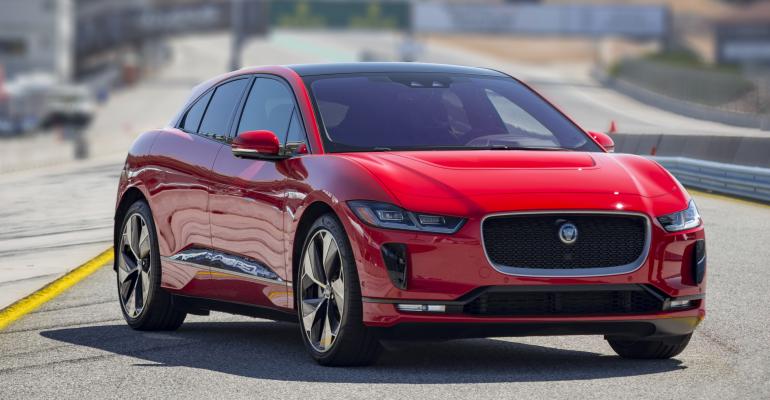European luxury brands are punching back against Tesla with their first mass-production electric cars, but their new designs miss the mark. Far from pointing towards the future, they’re stuck with design cues that keep them planted in the past.
Let’s go back 88 years for an important lesson in automotive design. By 1930 car styling had not evolved much from the Model T. Look at a 1930 Ford, Chevrolet or Dodge. They have square, flat radiators that stand bolt upright at the front of the car. They have flat, vertical windshields. And they have thin fenders that sit high above the tires.
But only three years later, car design became far more expressive. The ’33 Ford, Chevrolet and Dodge models had radiators that were no longer square. They have a stylish “horse collar” design that is no longer bolt upright. The windshields are still flat, but they are tilted back. And the fenders are very broad and rounded and more fully envelop the tires.
To our eyes the 1933 cars may still look old-fashioned, but in their day, they were revolutionary. They presaged the advent of streamlining and Art Deco design cues that would come into vogue before the end of the decade. By 1933 any automaker that was still using upright radiators, vertical windshields and thin fenders looked obsolete. And that brings us to new European luxury EVs.
Even though electric cars don’t have radiators, Mercedes, BMW, Audi and Jaguar all have giant radiator grilles on the front of their EVs. They’re mostly fake, just as NASCAR uses fake grilles to help identify one brand of car from another. It’s as if they can’t figure out how to identify their brands without that familiar radiator grille.
And the profiles of some of these EVs look just like vehicles already in showrooms. The profile of the Audi E-tron looks a lot like a Q7. The profile of the Mercedes EQC looks a lot like the GLC. In fact, to my eye, the profile and front-end graphic on the EQC look like they were traced from a 2014 Ford Edge Sport.
BMW did a good job with its iNext concept despite a huge, stylized twin-kidney grille (even though it reminds me of the nostrils on a snapping turtle). The profile stands out because it doesn’t look like anything the company makes today. But the iNExt is a concept. Let’s see what changes it goes through as BMW readies it for production.
Despite its big, traditional grille, the Jaguar I-Pace is a very handsome vehicle. But unless you’ve really studied the different Jaguar designs, it’s hard to quickly distinguish an I-Pace from the automaker’s gasoline-powered E-Pace and F-Pace models. Even more, the public is confused about why the electric one is called the I-Pace instead of the E-Pace.
The one European luxury brand that absolutely nailed the styling of its EV is Porsche. What debuted as the Mission E and will go into production as the Taycan should put frowns on the faces of all the Silicon Valley EV startups, including Tesla. The Taycan looks like it fell out of the future.
That’s the kind of advantage the Silicon Valley EVs all have right now. They look hyper-modern. And that’s what the public always has wanted – the latest in fashion. In the U.S. market certainly, the path to automotive success has been through style and instant gratification.
Tesla, Faraday Future and Lucid Motors offer that. Their cars instantly stand out from the pack. And while Faraday and Lucid have yet to make it into production and may not survive, their cars sure are head-turners. The European luxury brands are generating all kinds of headlines right now as they unveil their electrics. But that’s because battery-powered cars still are a novelty. The novelty soon will wear off, and I think their designs will quickly look dated, just like what happened 88 years ago.
John McElroy is editorial director of Blue Sky Productions and producer of “Autoline This Week” for WTVS-Channel 56, Detroit.





